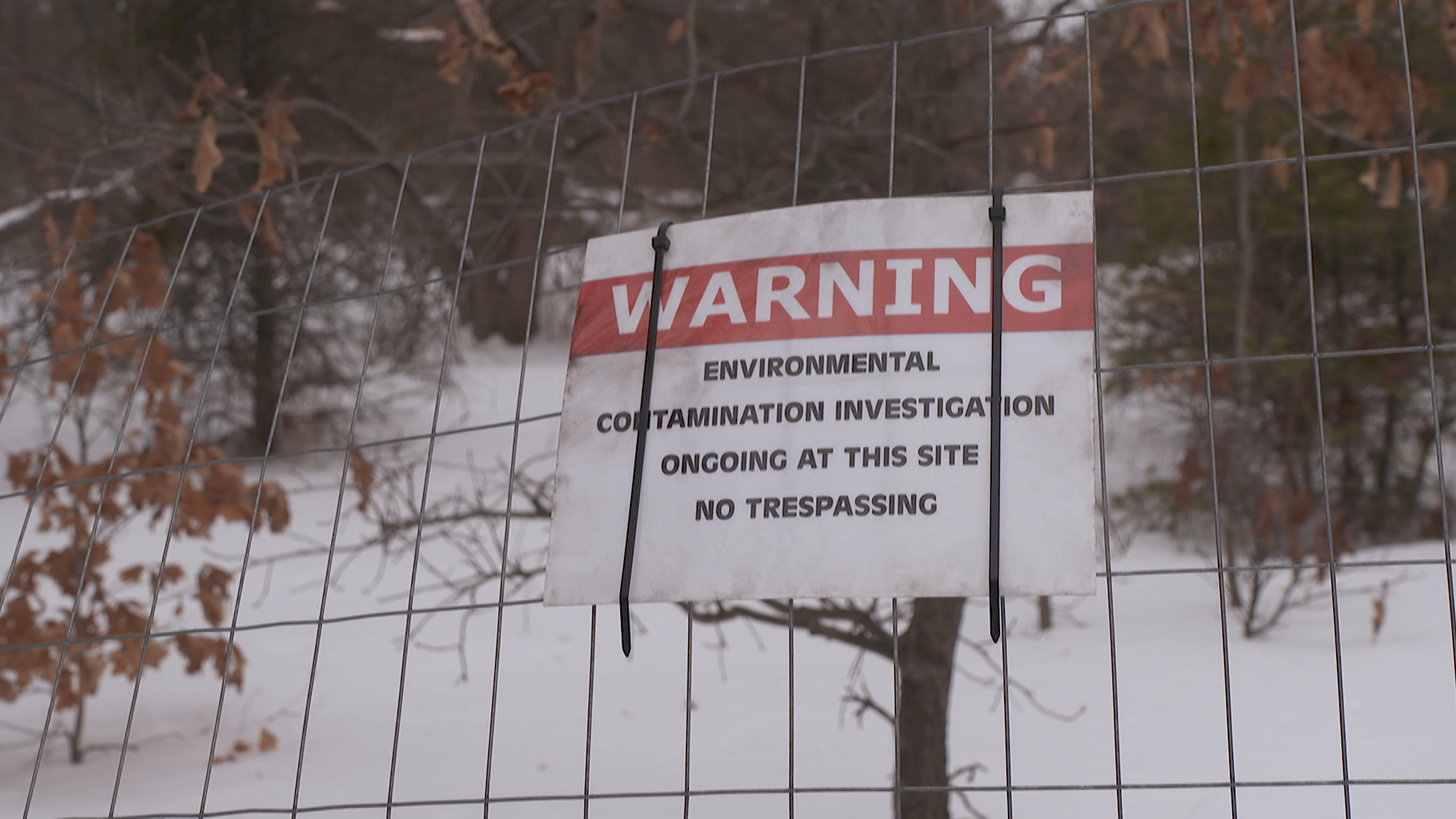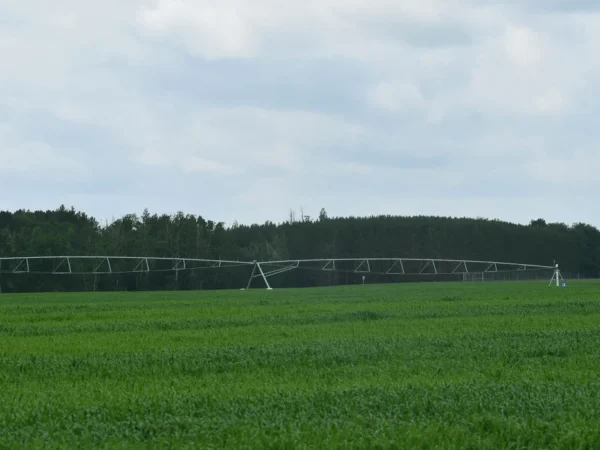
PFAS, short for per- and polyfluoroalkyl substances, are a group of widespread man-made chemicals that don’t break down in the environment or the human body and have been flagged as a major contaminant in sources of water across the country.
Keep up with PFAS-related developments in the Great Lakes area.
Click on the headline to read the full story:
Indiana:
- PFAS Action Bill Opposed by Majority of Indiana Representatives Heads to U.S. Senate – Indiana Environmental Reporter
The PFAS Action Act of 2021, a bipartisan bill introduced by Rep. Debbie Dingell, of Michigan, would set the pathway for PFAS chemicals to be designated hazardous substances, opening the door for future regulation of the chemical family in drinking water and clean up under Superfund legislation.
The bill passed the House by a vote of 241 to 183, with all of Indiana’s Republican representatives voting against the bill.
- IU scientist awarded $2.9M grant to study effects of toxins on Indigenous Arctic communities – The Indianapolis Star
An Indiana University scientist will lead an ambitious effort to determine the effect toxic chemicals have on an indigenous community in Alaska — research that might shed light more broadly on how contamination harms health and degrades the environment.
Amina Salamova was riding in the car with her husband when she received the email stating that she and her colleagues had received a nearly $3 million grant to spend 5 years studying exposure to toxic contaminants on St. Lawrence Island in Alaska.
Michigan:
- State begins to improve PFAS public notice; citizen’s group gets update on its recommendation – Traverse City Record-Eagle
Two months after a citizens advisory panel told the Michigan PFAS Action Response Team to ramp up its public notice efforts when investigations begin for suspected per- and polyfluoroalkyl contamination sites, they heard how much of their counsel bureaucrats heeded. They agreed it’s not the whole shopping list, but a decent first meal.
“They’re not hitting on all cylinders yet,” said Charlie Schlinger of Traverse City, a member of MPART’s Citizen’s Advisory Workgroup. “It seems they’re implementing parts and contemplating parts.”
- MDHHS testing Otsego area wells for PFAS as part of ongoing study – The Holland Sentinel
Michigan Department of Health and Human Sciences officials took samples from residential water wells near Otsego to test for potential PFAS chemicals as part of the ongoing investigation to find out how prevalent the contaminants are in the area.
In August, MDHHS sent notices to affected residents, letting them know that samples from the wells were going to be taken starting the week of Sept. 13. A department spokesperson said residents will be notified of the results when they are available after health officials conduct analysis on what the findings mean for public health.
The Michigan Department of Health and Human Services (DHHS) is enrolling children and adults from Kent and Kalamazoo counties in the latest effort, which is part of a nationwide study of health effects caused by PFAS exposure through drinking water in six other states.
Minnesota:
The failure of 3M and other manufacturers, such as DuPont, to publicly report and deal with potential PFAS problems when they first learned of them is saddling the companies with mounting legal costs because of lawsuits brought by several states and individuals. And it’s about to cost U.S. taxpayers billions of dollars.
3M told the Star Tribune that it has paid “more than $1.2 billion” to treat PFAS pollution. That is a fraction of the $10 billion in taxpayer funds the country’s new bipartisan infrastructure bill allocates for PFAS cleanup.
New York:
A plastics company accused of contaminating residents’ water in a New York town, has agreed to settle a class-action lawsuit for over $23 million, the Times Union reported.
The settlement, which was filed on Friday and is pending court approval, would resolve a lawsuit brought by eight plaintiffs that allege that Petersburgh-based Taconic Plastics polluted residents’ water with perfluorooctanoic acid (PFOA) from a nearby plant.
Ohio:
- County drinking water tests below EPA recommendation for ‘forever chemicals’ – Dayton Daily News
Montgomery County’s drinking water has low levels of a group of contaminants that have been linked to cancer and birth defects, as the water tested below the Ohio Environmental Protection Agency’s recommended health advisory level, officials announced.
However, those results may be misleading because Ohio’s health advisory for the toxins, dubbed “forever chemicals,” is one of the highest in the country, a local ground water expert said.
- Malfunction at Wright-Patterson Air Force Base leads to release of 100 gallons of fire-suppressant foam – Cincinnati Enquirer
Dozens of gallons of fire-suppressant foam were accidentally released on Thursday following an electric-component malfunction at Wright-Patterson Air Force Base, officials said.
The malfunction, which occurred in aircraft hangar 4016 on Wright-Patterson’s Area A, caused the release about 100 gallons of foam, according to a press release.
Pennsylvania:
- Why it’s taking Pennsylvania so long to regulate toxic PFAS chemicals in drinking water – The Allegheny Front
Chemicals common in firefighting foam and used as coatings on everything from outerwear to frying pans have contaminated drinking water in parts of Pennsylvania, but they aren’t regulated by the state. PFAS is a class of chemicals known as “forever chemicals” because they don’t break down in the environment and they remain in the body. Exposure has been linked to a variety of health conditions, including testicular and kidney cancers and decreased birth weights.
The federal government has come up with a recommended, non-enforceable limit for PFAS in drinking water, but experts say that limit is not low enough. Pennsylvania has said it will regulate the chemicals, but hasn’t yet. The Allegheny Front’s Kara Holsopple spoke with Kristina Marusic, a reporter for Environmental Health News, who, along with PublicSource, has written about this recently.
The Environmental Protection Agency is expected to announce in the coming weeks a plan to address contamination from PFAS, the class of toxic chemicals that have been detected in water sources nationwide.
In March, Pennsylvania’s Department of Environmental Protection announced that about one-third of 114 water systems tested for PFAS chemicals were found to contain the substances over 17 months of sampling. Some of the highest PFAS concentrations have been found in Bucks, Montgomery, and Berks counties.
Wisconsin:
- The Problem of ‘Forever Chemicals’ in Marinette, and the Solutions That Could Take as Long – Up North News
PFAS, man-made chemicals shown to have adverse health impacts, have spread through the area’s waterways, wastewater system, agricultural land and residents’ wells. But years after the contamination was disclosed, its extent and its impact on the community has still not been fully assessed. Instead of proactively addressing the issue, residents, local politicians and state regulation agencies have had to push the responsible company to fully reconcile the damage done.
- Environmental groups worry PFAS lawsuit filed by business lobby puts Wisconsin’s strongest pollution protection law at risk – Milwaukee Journal Sentinel
A judge on Friday blocked environmental advocacy groups from intervening in a case the groups say could overturn important environmental protections under the state’s hazardous spills law.
Waukesha County Judge Micheal Bohren ruled that Midwest Environmental Advocates, which is representing a number of organizations — including the River Alliance of Wisconsin and Citizens for a Clean Wausau — didn’t have sufficient interest in the case, but will be allowed to submit arguments on its concerns in the coming weeks.
The case stems from a February lawsuit filed by the state’s largest business lobby, Wisconsin Manufacturers & Commerce against the Department of Natural Resources, over the agency’s ability to require cleanup of unregulated emerging contaminants, such as “forever chemicals.”
- EPA proposal could put PFAS on contaminant list, UW experts support decision – The Badger Herald
Wisconsin Attorney General Josh Kaul supported the U.S. Environmental Protection Agency’s proposal to include per- and polyfluoroalkyl substances in the Contaminant Candidate List 5.
- State regulators expect to spend more than $500K a year on bottled water for French Island residents due to PFAS – Wisconsin Public Radio
State environmental regulators expect to spend more than a half million dollars each year to provide bottled water to nearly 1,200 households on French Island due to concerns stemming from PFAS contamination.
The Wisconsin Department of Natural Resources and Department of Health Services issued a drinking water advisory in March, making bottled water available to as many as 4,300 residents on the island near La Crosse.
- Watch now: PFAS found in Madison sewage; utility calls test results ‘favorable’ – Wisconsin State Journal
Toxic PFAS compounds known as “forever chemicals” have been found in Madison’s sewage, including the treated wastewater dumped into local waters and sludge spread on area farm fields.
Tests completed in May found PFAS in the raw sewage — or influent — entering the plant as well as in the treated wastewater, or effluent, sent to Badfish Creek and Badger Mill Creek, according to a report prepared by environmental consulting firm TRC. Both creeks flow into the Yahara River.
National:
- Global action on harmful PFAS chemicals is long overdue: Study – Environmental Health News
The scientific community has known for decades that a group of widely-used chemicals is causing health harms across the globe, but effective policies aimed at curbing those impacts lag far behind the research, according to a new study.
Catch up on more PFAS news on Great Lakes Now:
Raining PFAS: Amount of PFAS found is outpacing legacy contaminants
API key not valid. Please pass a valid API key.Featured image: Sign warning for environmental contamination (Great Lakes Now Episode 1012)




